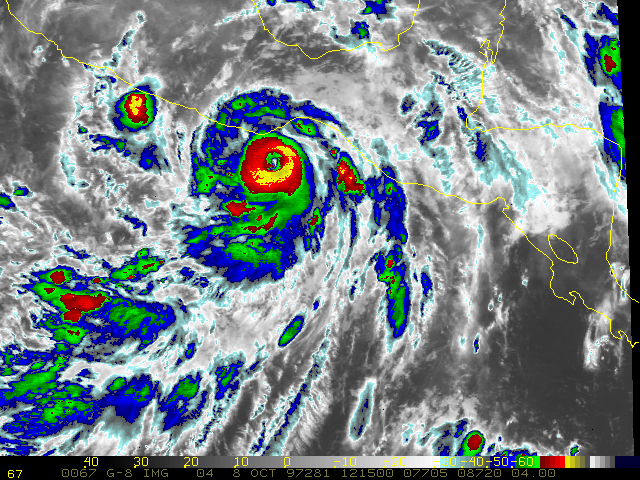One technique, known as the Dvorak technique (1) (used in the United States), uses digital infrared images from geostationary satellites. The upwelling IR radiation is a measure of the temperature of the cloud top, or, in the absence of clouds, the temperature of the Earth's surface (plus a measure of atmospheric humidity). The more intense a tropical cyclones is, the better-defined, clear, and dry the eye is (due to subsidence), and also the higher the cloud tops above the eyewall. This height difference between the eyewall and the eye is apparent in a stereo-image of a hurricane from space. So, from the perspective of a satellite in space, more intense tropical cyclones have a higher IR 'blackbody' temperature in the eye, and a lower one over the eyewall.
The Dvorak technique estimates the IR temperature difference: it takes the value in the eye, minus the lowest value on a 55 km circle centered around the eye. Dvorak then assigns T-numbers, and a comparison with in situ data (from reconnaissance flights by the Hurricane Hunters) shows a good correlation between T-numbers and observed wind speed. For instance, Atlantic hurricane Pauline measured a T-number 6 on 7 Oct 1997, and this corresponds to maximum sustained surface winds of 59 m/s. According to Table 13.2 in the textbook, this implies a class 4 hurricane.

Fig 1. GOES-8 infrared image of hurricane Pauline at 1215 UTC 8 Oct. 1997. During the following 24 hours this hurricane caused extensive damage in Acapulco, Mexico. Pauline killed 230 people. Almost all died by drowning, as over 400 mm of rain fell in less than 24 hours.